Mission one for today is to check out the Air Museum.
I’m currently trying to work out how to see it without having to cart my riding gear around.
Unfortunately I couldn’t get this room for a second night, so it’s onward to Kaikoura (by recommendation) this afternoon. Just a short trip, because I expect to spend quite a bit of time at this museum.
Knights of the Sky
The Omaka Air Museum opens at 10am. I was in there at 10:10 and only just emerged for a sandwich and a cappuccino. It’s 12:30pm.
Sir Peter Jackson’s collection of WWI aircraft and memorabilia is truly staggering. Adding to the spectacular collection itself are dioramas and displays crafted by Jackson’s own Weta Workshop and Wingnut Films.
I hope my photos can do this incredible collection a modicum of justice. I’ll post them later. For now, on to the WWII portion – Dangerous Skies!

Knights of the Sky – WWI
10:10am – 12:30pm
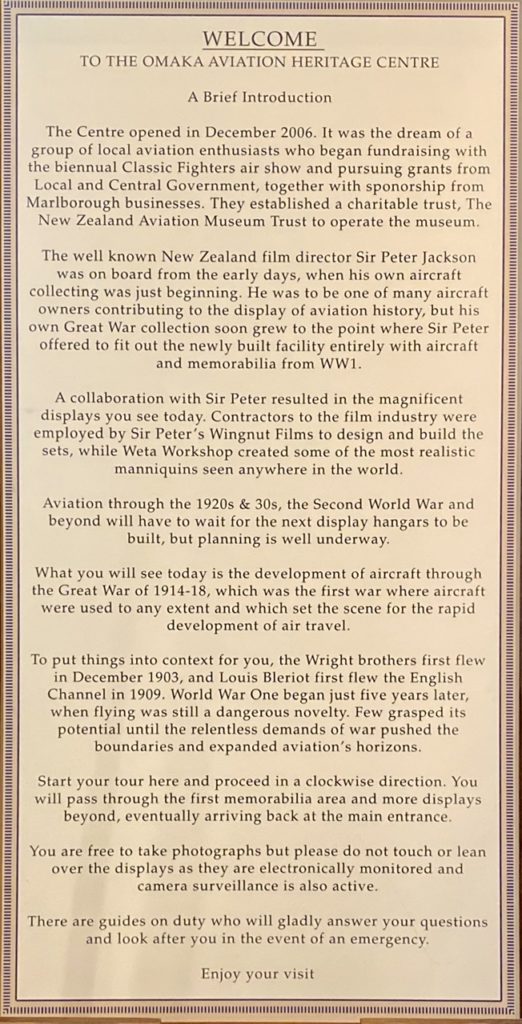
As soon as I walked through the entrance, it was clear that this was no stuffy old exhibit with ratty replica uniforms on roughly made mannequins. It was spacious and clean and very professionally managed.
Immediately, a guide greeted me, informed me that there are information placards on each display and that I was welcome to ask any questions that I may have as I walked around.

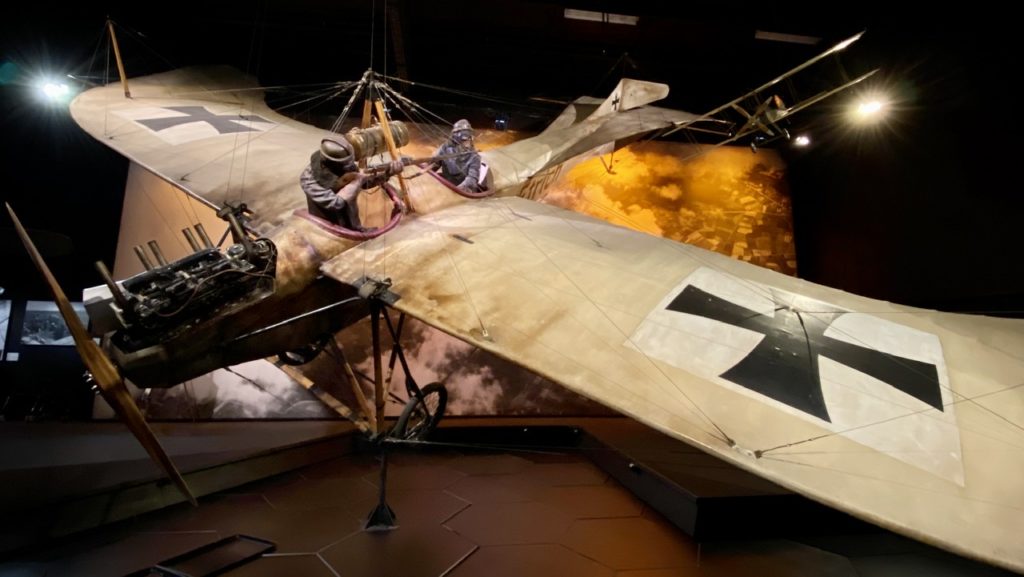
As you can see, it wasn’t just a collection of static models on their wheels, skids or floats. Many of them were frozen in a moment of action, some even inverted.
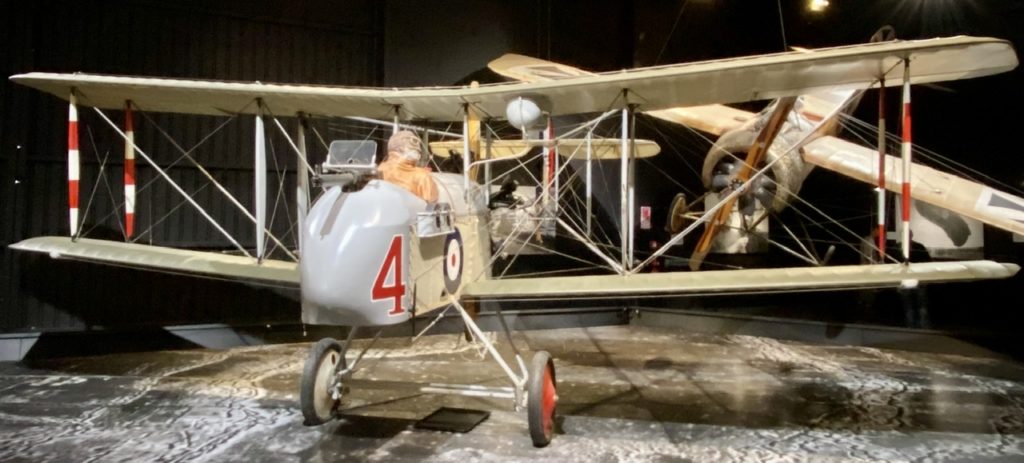
The following picture is of the first big diorama, depicting a Morane Saulnier BB that had skidded to a halt, presumably because the pilot and gunner were heavily injured.
Some ground crew are carrying the gunner out of the cockpit and on the right, a field nurse is pulling up in a vehicle, ready to cart the patient to the medical tent.
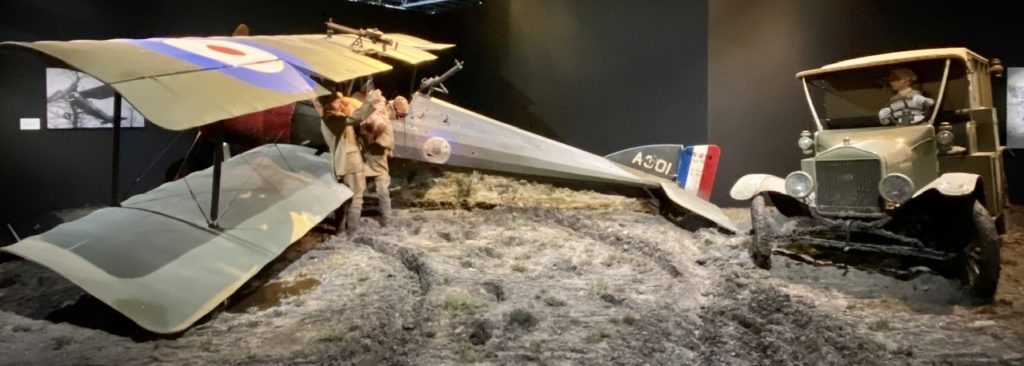
Most impressive were the puddles of water in the boot prints and gouges left in the ground by the skidding aircraft, and the spattered mud on the side of the people’s boots and the vehicle.
I sincerely hope those finer details can be seen in the following pictures.
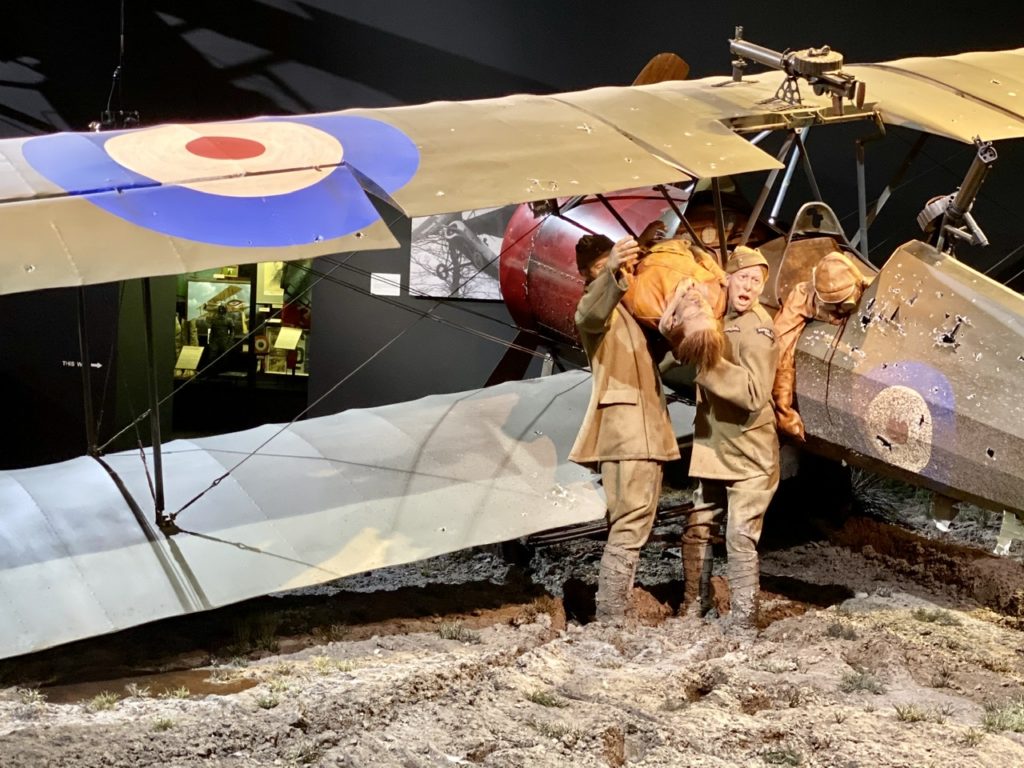
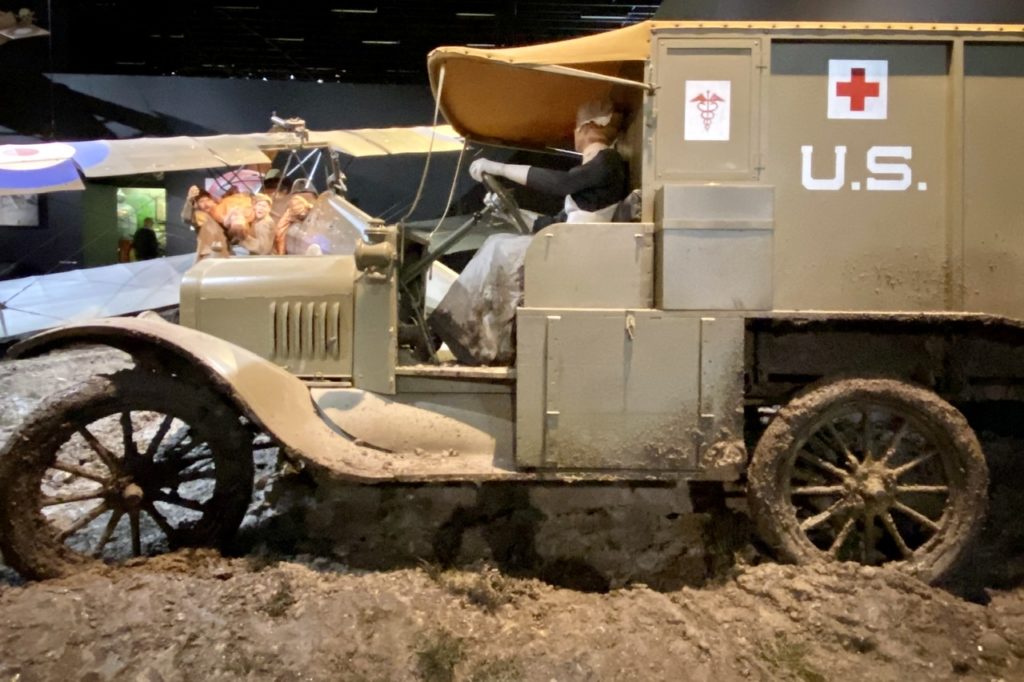
Other displays included uniforms worn by personnel and pilots, both men and women, along with letters and other personal effects as donated, such as letters, medals and trophies.
The authenticity of each item was indicated with photos of the wearer or by using references from the donor, where possible. Where the origin or owner was unknown, more general information about how the item was used or worn was displayed.
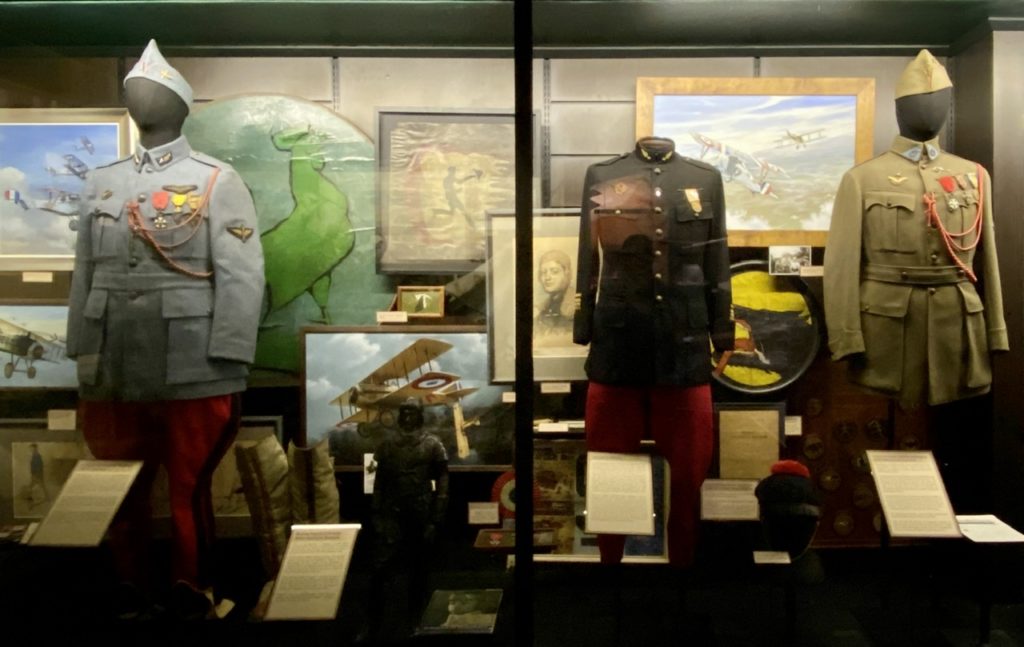
Still more displays contained equipment from aircraft themselves or in some cases, even the cockpits and instrument panels from crashed, captured or salvaged machines.
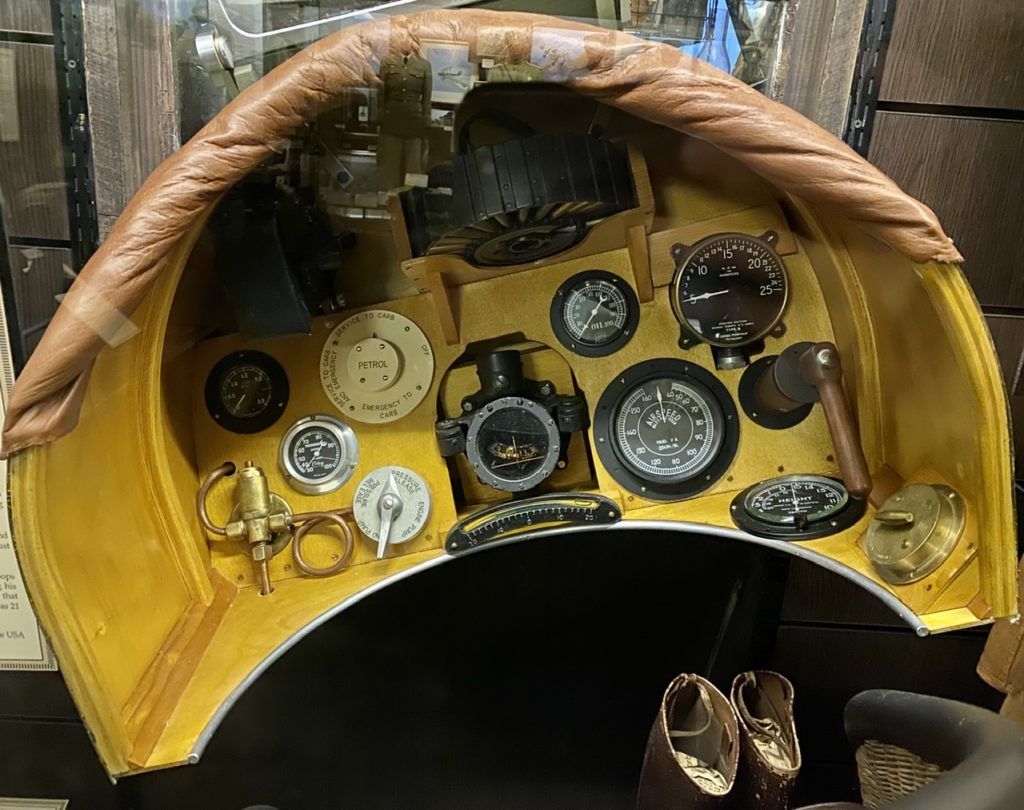

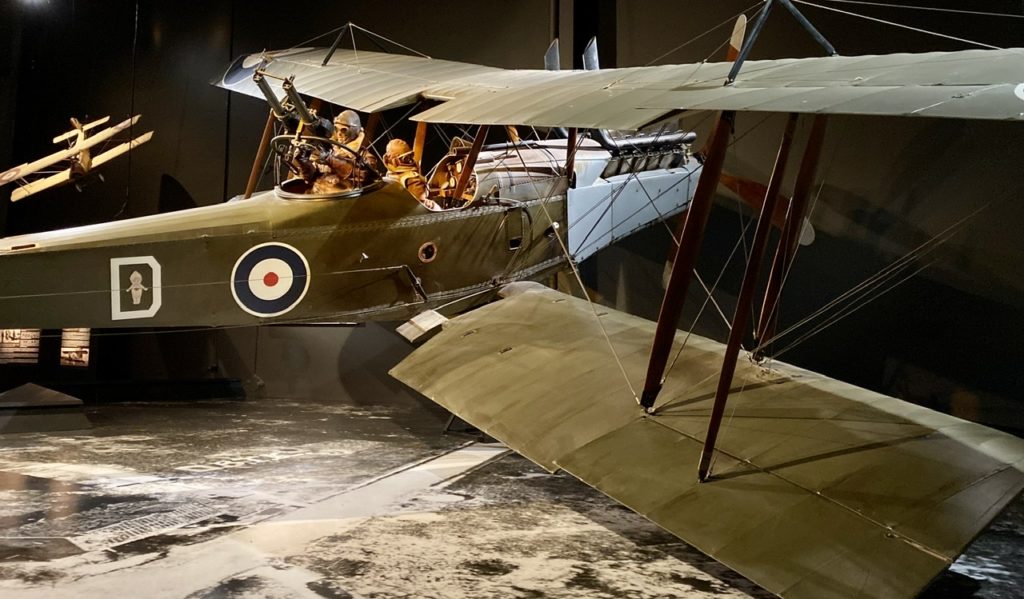
Here’s another great diorama depicting ‘Grid’s Great Escape’.
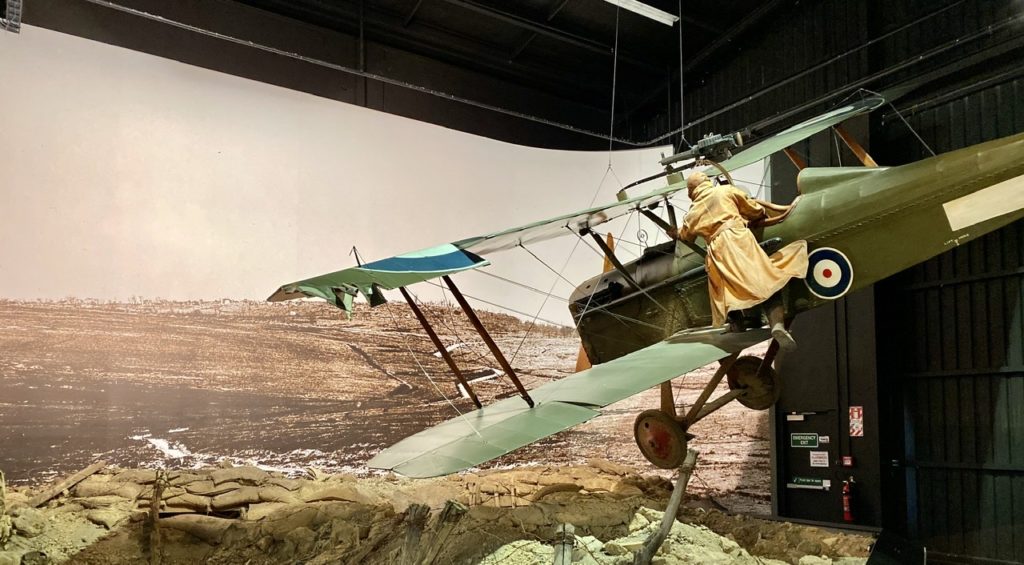
The story goes that NZ flying ace Lieutenant Keith ‘Grid’ Caldwell and a fellow squadron member collided whilst combating an enemy aircraft. Grid’s plane took substantial damage to its wing structure and began to spin out of control.
Preparing to bail out over enemy trenches (sans parachute because of a concern that pilots would eject unnecessarily), Lt Caldwell stepped out onto the wing and accidentally discovered that by grasping the frame, he could steady the plane enough to fly it once more.
Standing on the outside of the cockpit, he managed to limp the plane back to safety, rolled off the plane as it crashed, dusted himself off and hit the mess tent for some drinks.
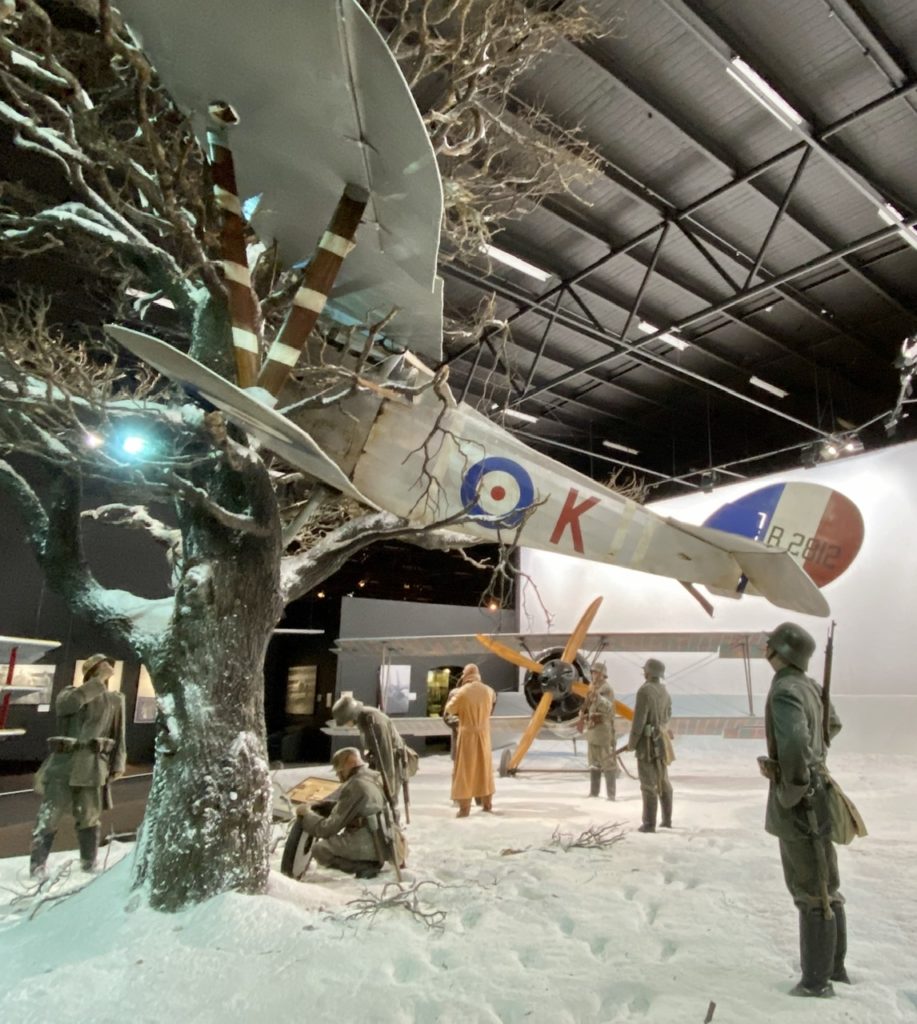
Did any of you read the Biggles stories?
This next picture reminds me of the chivalry, daring and mutual respect between pilots on all sides as depicted in those books.
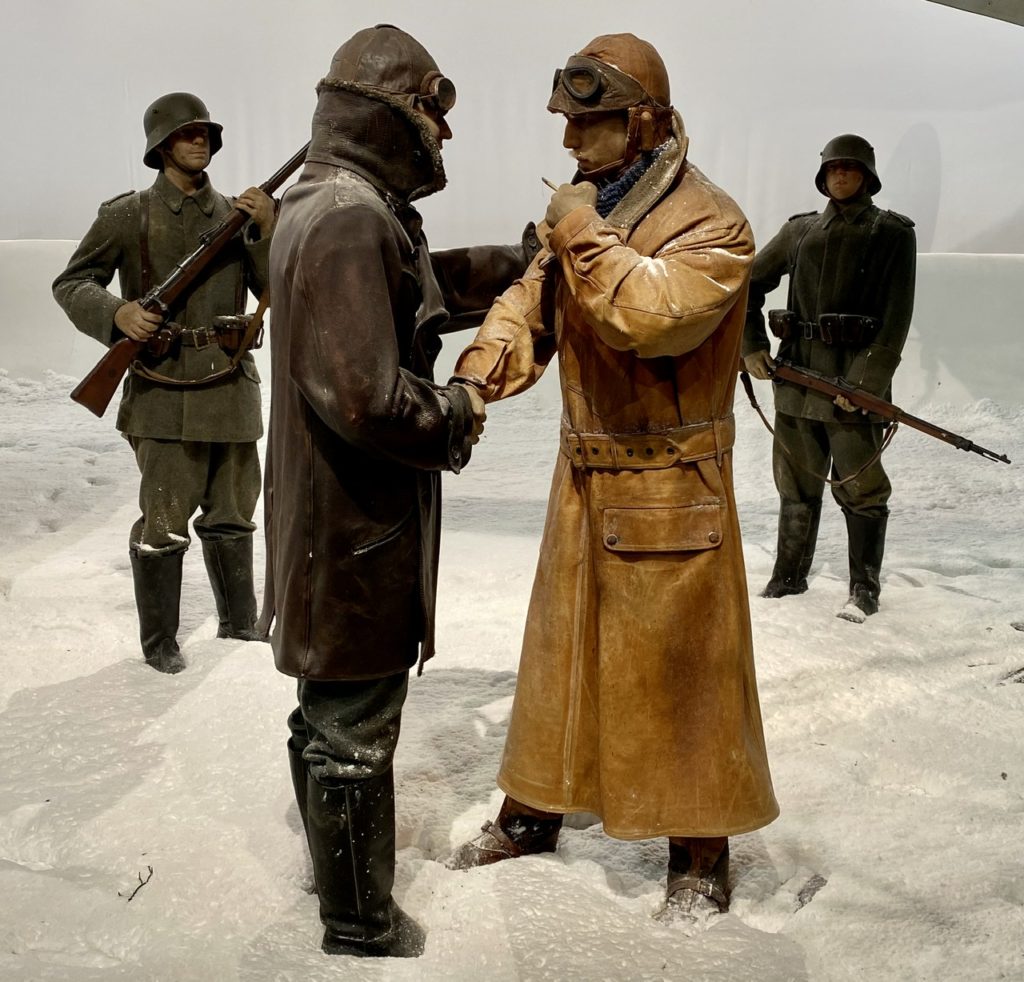
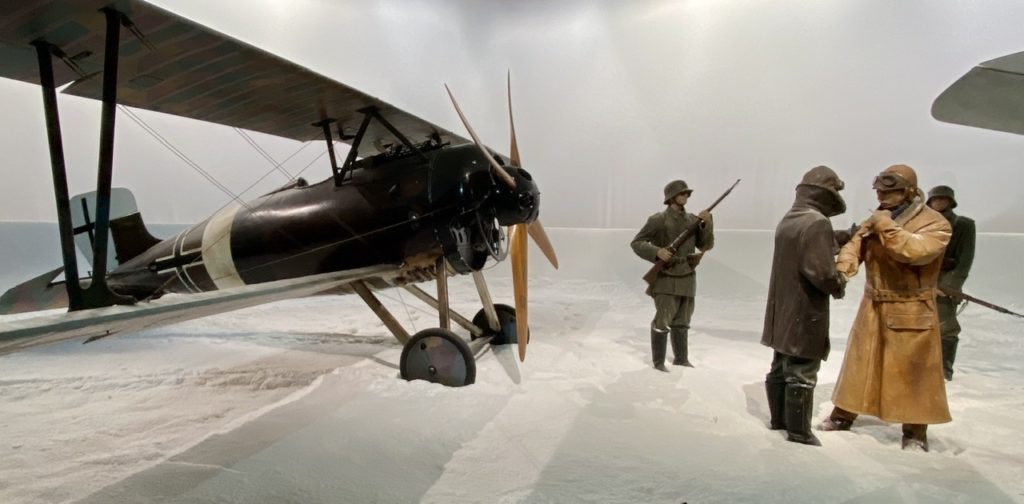

A collection in itself of several versions of the legendary Fokker Dr.I (dreidecker) as made famous by Baron Manfred von Richthofen aka. The Red Baron.
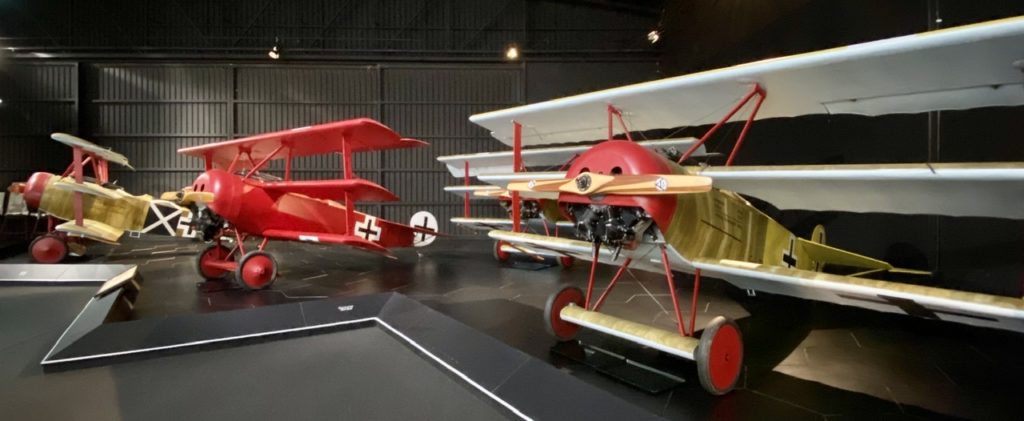

Enjoying the blog Tak. Mountains, planes, roads, quirky stuff, bikes, ice, sea, rain and rocks.
Thanks Mike san.
It’s been an epic trip.